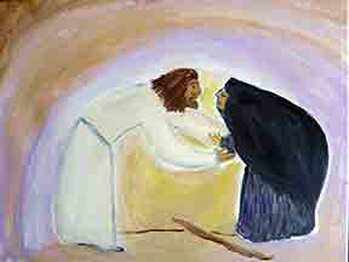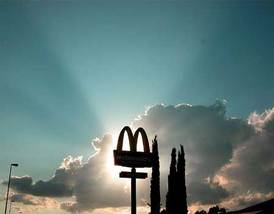 Jesus and the Bent Over Woman, by Sister Barbara Schwarz, www.artafiregallery.homestead.com
Jesus and the Bent Over Woman, by Sister Barbara Schwarz, www.artafiregallery.homestead.com We mostly spend our lives conjugating three verbs: to Want, to Have, and to Do… forgetting that none of these verbs have any ultimate significance, except so far as they are transcended by, and included in, the fundamental verb, to Be.
Prayer and worship, she, and I, would propose, are about helping us with that fundamental verb: bending and unbending our lives and bodies, our whole selves, be-ing, in relationship to the Spirit of all…








 RSS Feed
RSS Feed